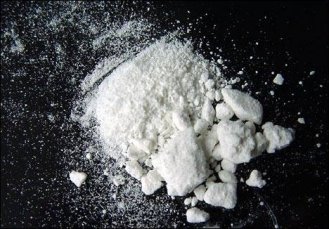Cocaine Information
- Causes of Cocaine Abuse
- Signs of Cocaine Abuse
- Student Cocaine Abuse
- Who invented Cocaine
- Cocaine Abuse and Overdose
- Cocaine Abuse Effects
- Cocaine Abuse Statistics
- Cocaine Abuse Treatment
- Cocaine Photos
- Dangers of Cocaine Abuse
- How is Cocaine Taken
- How much does Cocaine Cost
- Side Effects of Cocaine Abuse

Cocaine Photos
.jpg)

.jpg)
.jpg)



Cocaine photos show that this is a powerful and addictive stimulant drug. The powdered hydrochloride salt form of cocaine can be snorted or dissolved in water and injected. Cocaine photos note that crack is cocaine that has not been neutralized by an acid to make the hydrochloride salt. This form of cocaine comes in a rock crystal that can be heated and its vapors smoked. The term "crack" refers to the crackling sound heard when it is heated.
Cocaine photos point out that regardless of how cocaine is used or how frequently, an user can experience acute cardiovascular or cerebrovascular emergencies, such as a heart attack or stroke, which could result in sudden death. Cocaine-related deaths are often a result of cardiac arrest or seizure followed by respiratory arrest.
Cocaine is a strong central nervous system stimulant that interferes with the re-absorption process of dopamine, a chemical messenger associated with pleasure and movement. The buildup of dopamine causes continuous stimulation of receiving neurons, which is associated with the euphoria commonly reported by cocaine abusers.
The physical effects of this drug as shown in cocaine photos and reports include constricted blood vessels, dilated pupils, increased body temperature, increased heart rate, and high blood pressure. The duration of cocaine's immediate euphoric effects, which include hyperstimulation, reduced fatigue, and mental alertness depends on the route of administration. The faster the absorption, the more intense the high. On the other hand, the faster the absorption, the shorter the duration of action. The high from snorting cocaine may last 15 to 30 minutes, while that from smoking may last 5 to 10 minutes. Increased use can reduce the period of time an user feels high and increases the risk of addiction.
Cocaine photos report that some users of this drug describe feelings of restlessness, irritability, and anxiety. A tolerance to the "high" may develop. Many addicts report that they seek but fail to achieve as much pleasure as they did from their first exposure. Some users will increase their doses to intensify and prolong the euphoric effects. While tolerance to the high can occur, users can also become more sensitive to cocaine's anesthetic effects without increasing the dose taken. This increased sensitivity may explain some deaths occurring after apparently low doses of cocaine.
Use of cocaine in a binge, during which the drug is taken repeatedly and at increasingly high doses, may lead to a state of increasing irritability, restlessness, and paranoia. This can result in a period of full-blown paranoid psychosis, in which the user loses touch with reality and experiences auditory hallucinations.
Cocaine photos show other complications associated with cocaine use including disturbances in heart rhythm and heart attacks, chest pain and respiratory failure, strokes, seizures and headaches, and gastrointestinal complications such as abdominal pain and nausea. Because cocaine has a tendency to decrease appetite, many chronic users can become malnourished.
Different means of taking cocaine can produce different adverse effects as shown in cocaine photos. Regularly snorting cocaine, for example, can lead to loss of the sense of smell, nosebleeds, problems with swallowing, hoarseness, and a chronically runny nose. Ingesting cocaine can cause severe bowel gangrene due to reduced blood flow. People who inject cocaine can experience severe allergic reactions and, as with all injecting drug users, are at increased risk for contracting HIV and other blood-borne diseases.
